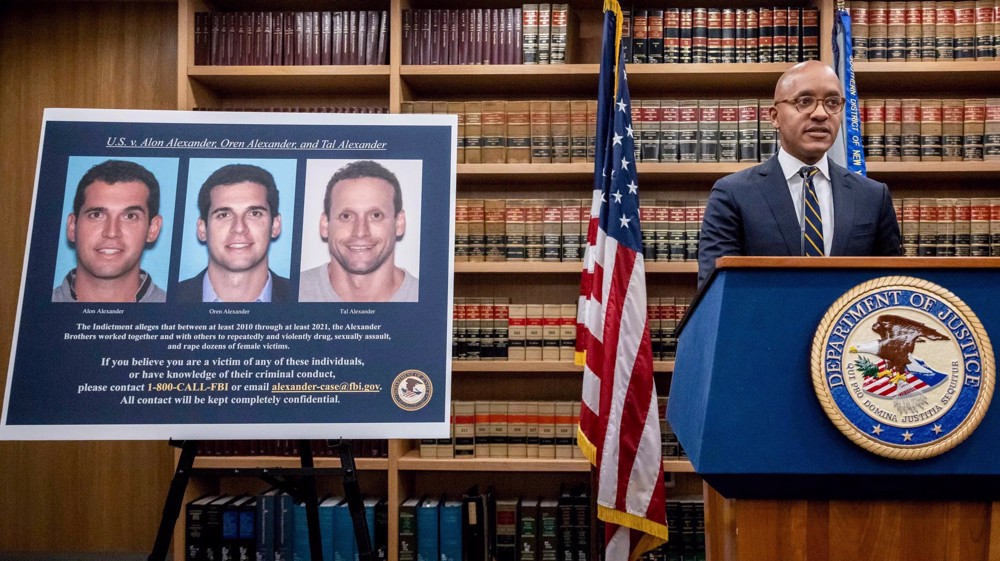Cuomo outlines Fauci-approved shutdown plans amid hospitalization uptick
New dining restrictions could hit New York City as early as next Monday amid an increase in Covid-19 hospitalizations and holiday-related transmission, Gov. Andrew Cuomo said Monday, outlining a new approach to how the state determines closures.
Indoor dining could shut down, along with broader lockdowns, if New Yorkers don’t take steps to reduce small, indoor gatherings — the top driver of Covid-19 cases and hospitalizations across the state, the governor, joined remotely by Dr. Anthony Fauci, told reporters Monday.
“You could see New Yorkers change their behavior and be more careful, and flatten, and you don’t have the increase. That is a possibility. I don’t think it’s a probability because I’ve been sitting here for the past month saying please, please, please,” Cuomo said. “Worst case scenario: the number keeps coming up and it gets so high that you endanger overwhelming the hospitals, then we have to hit pause and go back to closure.”
The new plan is based on hospitalization rates rather than infection rates and will take a regional approach to reducing Covid-19 cases. The aim is to avoid mass hospitalizations such as what the city saw this past spring, when it was the national epicenter of the pandemic, health care systems were overwhelmed and field hospitals popped up across the five boroughs.
First, the state will shut down indoor dining in New York City if after five days the hospitalization rate doesn’t stabilize, the governor said. Indoor dining, unlike other spots such as nail salons and gyms, has been singled out due to CDC guidance issued Friday.
On Monday, the de Blasio administration reported 144 patients were admitted to city hospitals, with about 53 percent of them testing positive for Covid-19. The city also reported 2.28 hospital admissions per 100,000 people on a seven-day average. That rate has steadily climbed from just under 1.5 admissions per 100,000 people from Nov. 21, which is indicative that an indoor dining shutdown is imminent.
Andrew Rigie, head of the NYC Hospitality Alliance, lamented the decision, saying Manhattan, which has the largest number of restaurants in the state, has reported positivity rates well below other New York counties that are not facing imminent closures.
"Yet the proposal is to close the city’s indoor dining while keeping those in these other counties open," he said in a statement. "Another forced government closure of New York City restaurants will cause an irreversible harm on even countless more small businesses and the hundreds of thousands of workers they employ, especially if it is not coupled with financial relief.”
The state will shut down all nonessential business in a region if the seven-day average shows that hospitals are on track to reach 90 percent capacity in three weeks, Cuomo said.
“If our hospital capacity becomes critical, we’re going to close down that region,” he said. “We want that three-week buffer.”
Cuomo also called on hospitals, which have about 54,000 beds across the state, to increase capacity by 25 percent.
The hospitals are required to report their bed capacity to the state so it can oversee patient loading, which means shifting people at an overwhelmed hospital to a nearby system with open beds. That management system started during the first wave and is still in effect, Cuomo said.
Fauci called the plan “really sound,” saying the measures are coming at a crucial time when Thanksgiving- and holiday-related transmission are “superimposed” on each other.
“You have a surge upon a surge, and then before you can handle that, more people are going to travel over Christmas. They’re going to have more of those family and friends gatherings,” Fauci said. “If those two things happen and we don’t mitigate well … then we can start to see things really get bad in the middle of January.”
Public health experts and city officials have warned this winter will be bleak without additional Covid-19 precautions to keep Americans from spreading the virus, and a vaccine will not be widely available to the public by April, Fauci said.
The state intends to vaccinate frontline workers in high-risk facilities, along with people who live in congregate settings like nursing homes, jails and shelters, over the next few months. New Yorkers who are not deemed “high priority” will likely be able to get inoculated between April and June, with the hope of vaccinating between 75 and 80 percent of the population — a critical mass of people that will create an “umbrella of protection over the community,” Fauci said.
“The virus will not have any place to go,” Fauci said. “When that happens will be entirely dependent … on getting the message out on why it’s so important for people to get vaccinated.”
Cuomo asked Fauci to star in an educational ad to convince New Yorkers to get vaccinated — a daunting task for government in the face of growing vaccine skepticism and fears that a Covid-19 vaccine was rushed for political reasons under the Trump administration.
“Seventy-five, 80 percent is going to be very hard to reach,” Cuomo said.
Source: Politico
Relentless Israeli ceasefire violations justify need for self-defense: Lebanese MP
Tel Aviv tells Damascus Israeli forces will remain in occupied territory: Report
Dec. 22: ‘Axis of Resistance’ operations against Israeli occupation
‘Abhorrent’: Oxfam says only 12 trucks delivered aid in North Gaza since Oct.
VIDEO | Leader receives religious eulogists on Hazrat Fatima birth anniv.
Pope Francis slams Israel’s ‘machine-gunning’ of Gaza children
US hostage-taking of Iranian nationals violation of intl. law: Deputy FM
VIDEO | Carol Singers for Palestine on London’s Parliament Square










 This makes it easy to access the Press TV website
This makes it easy to access the Press TV website